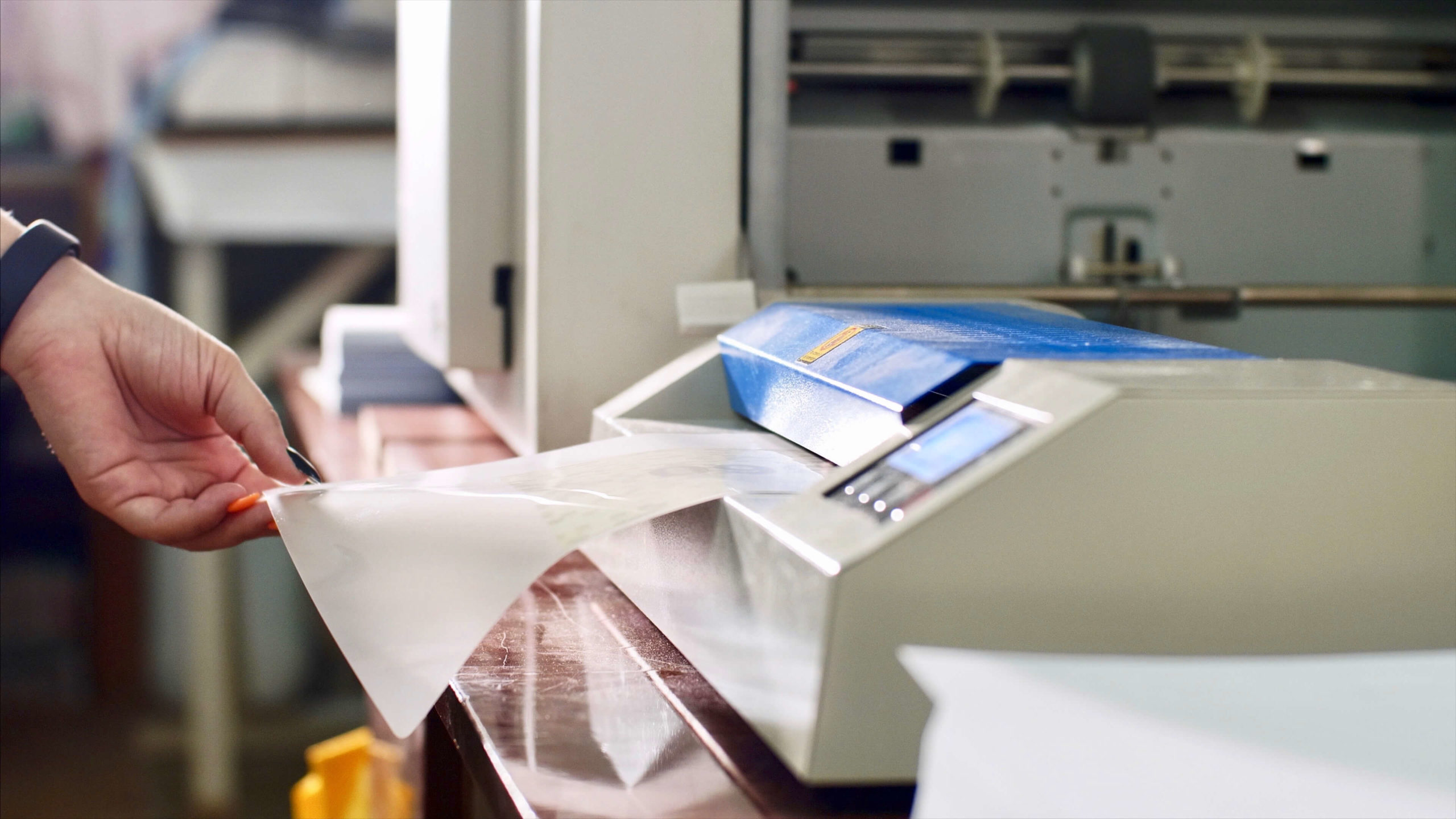If you ever think about laminating (which, we realise might not be the topic at the forefront of your mind most days, but stay with us for a second), you might remember the colourful laminated name tag on your desk and above your bag in primary school. Well, we’re here to tell you that laminating has a place in your adult life, too (like we need another thing to add to our Pinterest boards).
Most people know the basic concept of laminating something, but are you aware that there are different types of lamination you can choose from, depending on the product you’re creating? At the simplest level, lamination involves placing a clear, plastic film on either side of a printed product to protect it from damage and give emphasis to the colours and patterns chosen.
In this blog, we’ll take you through the most popular types of lamination, how each type can elevate the impact of your printing, and how to decide what’s best for your product.
Gloss Lamination
Gloss lamination is arguably the most well-known and easily recognisable type of lamination. It produces a shiny, reflective finish that makes brighter colours appear more vibrant, and darker colours appear richer.
The protection provided by gloss lamination is ideal for items such as product packaging, restaurant menus and kids’ books. In other words, anything likely to be handled a lot and that might be left with sticky fingerprints or stains. When something is covered with gloss laminate, markings can generally be easily removed without damaging the product.
Gloss lamination is also commonly used for promotional material, as its polished, glass-like finish is difficult to ignore. So, if your intention is to produce something striking that’s bound to capture someone’s attention as they walk by, then gloss lamination is your best bet!
Matte Lamination
If you’re going for something subtle yet sophisticated, then consider matte lamination. It results in a more subdued look by making colours appear more muted and natural. With little to no light reflecting off the surface of the product, matte lamination is perfect when you want to avoid any glare or reflection.
Unlike gloss lamination, which has a slick, polished feel, matte lamination feels smooth and soft to the touch. Keep in mind that matte lamination doesn’t provide the same protection from damage as gloss lamination. It’s more likely to scratch or scuff, so if you’re producing a recipe book that’s likely to end up covered in floury fingerprints, matte might not be the way to go!
Velvet Lamination
At first glance, velvet lamination may be confused with matte lamination. However, there are some notable differences. Like matte lamination, products that are laminated using a velvet finish also feel soft and smooth to the touch. However, velvet laminated products are more suede-like or, dare we say it, velvety.
So, if you’re creating a luxury product and want your customer to have a more sensual, interactive experience, velvet lamination should definitely be on your radar. It can also make colours appear deeper, while producing the same elegant, distinctive look as matte laminated products.
Velvet lamination also tends to be more resistant to scuffs and marks compared to matte lamination. Products are more durable and less likely to be easily bent or damaged. In an impressive and somewhat ironic way, velvet lamination adds a protective layer that makes your product feel more delicate.
One downside to velvet lamination however, is the increased cost. Considered the most luxurious of the options explored in this blog, it tends to be a little more expensive to produce, so be sure to keep this in mind if you have a budget to stick to.
Final Thoughts
We hope this blog has highlighted the value in thinking about possible finishes for your product. Let’s be honest — we all tend to be drawn more to products and materials that look and feel beautiful. We’re certainly less likely to discard a business card or presentation folder if it’s striking and unique.
So, before pushing print, take some time to think about what you want your product to achieve and the overall look that you’re going for.
Still unsure? Here at Jiffy Printing, we’re always around to help talk you through it and make some suggestions, so get in touch to discuss further.

